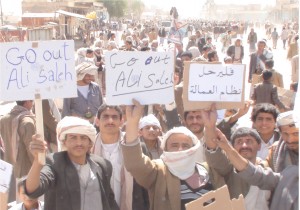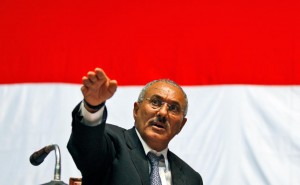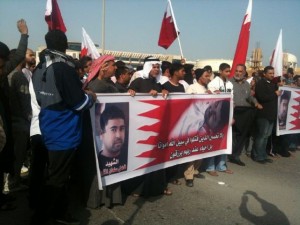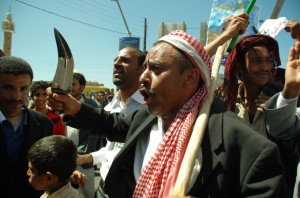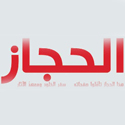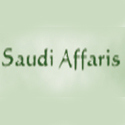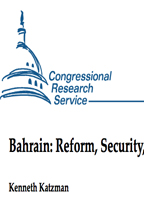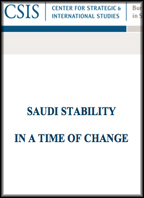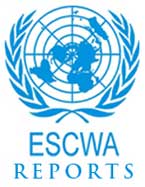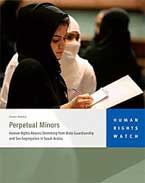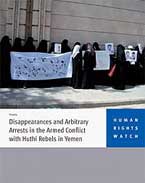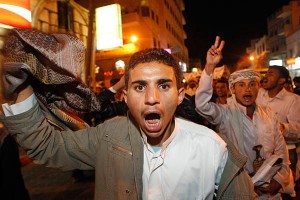
As jubilant protesters in Cairo celebrated the ouster of Egyptian President Hosni Mubarak, Yemenis were calling for a revolution of their own.
In the southern port city of Yemen, protesters marched through the district of Mansoura, waving the old flag of South Arabia and chanting, “Revolution, revolution for the south.”
Just hours before, security forces had fired live ammunition during a protest on the same street, according to eyewitnesses. Hundreds more staged ad hoc demonstrations throughout Aden, as well as in other cities across Yemen’s south.
“After Hosni Mubarak, Yemen is going to be next. I know it,” said Zahra Saleh, a prominent secession activist watching the scenes in Cairo on TV in a small Aden office.
“Now our revolution has to be stronger,” declared Ali Jarallah, a leader in the southern separatist movement sitting with Ms. Saleh on the low cushions of a diwan.
Divergent aims of Yemeni protesters
The Yemeni southern secessionist movement is not calling for political reforms, an end to corruption or even for President Ali Abdullah Saleh to step down, as the political opposition is doing in the capital of Sanaa. They are pushing for the end of what they view is northern Yemeni occupation and the restoration of an independent southern Yemeni state.
Though both derive momentum from the recent revolts in Tunisia and Egypt, the divergent aims of the Yemeni protesters represent another example of how anti-regime factions across the Arab world our shaping revolutionary energy to serve their own agendas.
“What happened in Egypt sent a blink of hope to the [southern] movement,” says Tammam Bashraheel, managing editor of Aden’s officially banned Al Ayyam newspaper.
Exiled southern movement leader and former Vice President Ali Salim Al Beidh said that events in the Arab world, and especially what is happening in Tunisia and Egypt, reflect a new stage in history that can be likened to the end of the cold war. Speaking to local press on Thursday, he compared the southern Yemeni demonstrations to Egypt, where youths have also played a central role.
“The revolution of the south is a revolution of the youth and younger generation,” said Mr. Beidh.
‘America supports oppressors’
In Sanaa, anti-government protests have focused on pressuring the ruling party to accept political reforms and are carried out in relative peace. However in Yemen’s south, the increased number of demonstrations since Tunisia’s uprising have been more violent.
“Demonstrations are allowed to happen in Sanaa without weapons, why do they use weapons on us in the south?” asks secession activist Wagdy Al Shaaby, who had just returned to Aden Friday afternoon from a protest of about 1,000 held in Zinjibar in neighboring Abyan province.
He also criticized the US for supporting its Arab allies, even when they resort to authoritarian measures in the name of stability.
“America is a democracy, but when to comes to the Arab world America supports oppressors,” he says. “America protects these countries until they blow up.”
Aden governor urges security, stability
In one Aden neighborhood, known for being a hotbed of secessionist sentiment, the old South Arabia flag is spray painted on building walls alongside posters of young man killed by security forces. Next to one Khaled Darwish poster was written a warning to the Yemeni government: “We are going to take revenge for you, Darwish.”
“If there continues to be no recognition of political rights here, [separatist activity] won’t stop,” says Mr. Bashraheel.
The fractured yet popular southern separatists argue that since unification of north and south Yemen in 1990, and especially after a bloody civil war between the two sides of the country in 1994, there has been a systematic attempt to erase the identity of south Yemen.
They claim that southerners don’t have proper representation in the central government, and that the government takes resources found in southern governorates, namely oil, without investing back in the south’s infrastructure.
Yemen’s government accuses separatists of harming national unity and stirring up trouble. On Thursday, Gov. Adnan Al Jafari of Aden told local press “security and stability are the responsibility of everyone.” He added, “We must learn from other countries that have lost their security and stability and use that in positive ways for our country.”
The government has also tried to link secessionists to Al Qaeda in the Arabian Peninsula (AQAP), the regional terrorist franchise based in Yemen. AQAP, for its part, has sought to play on southerners’ grievances in order to unite the two groups against their common enemy, the Yemeni state. Separatists deny that they have any ties with AQAP, and instead blame the existence of Al Qaeda in Yemen on the Saleh regime.
A fast-closing window
Because clashes happen far from the eyes of international observers, it difficult to assess whether the perpetual violence in Yemen’s south between security forces and armed factions comes from Al Qaeda or harak, the Arabic name for southern separatists. However, what is certain is that this violence what has worried Western governments that destabilization in this area allows AQAP to move freely.
“The deterioration of the south would lead to instability of the entire countries and will definitely provide space for Al Qaeda to function. The southern separatist movement is not allied to Al Qaeda but the absence of state control gives Al Qaeda space to exist in areas that are controlled by harak,” said independent Yemeni political analyst Abdul-Ghani Al Iryani.
“The lack of unified leadership [in the separatist movement] makes it difficult for the government to reach a deal and therefore Harak will continue until the legitimate aspiration of the people of the south are achieved and that is still within the ability of the central government to provide in the context of unity, but I see that this window is fast closing,” he said.









